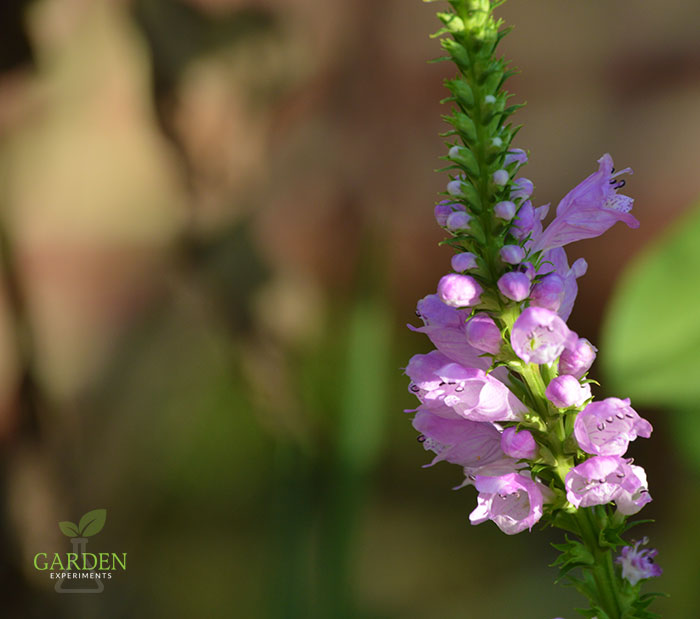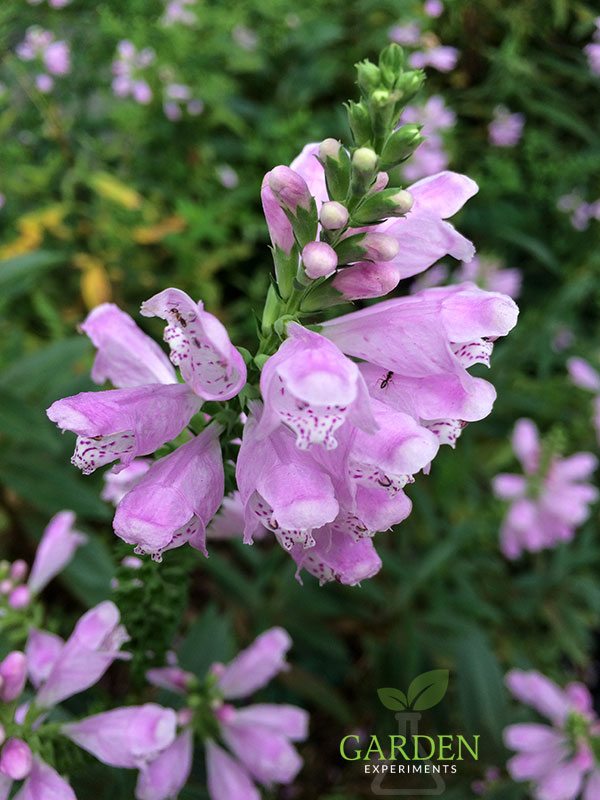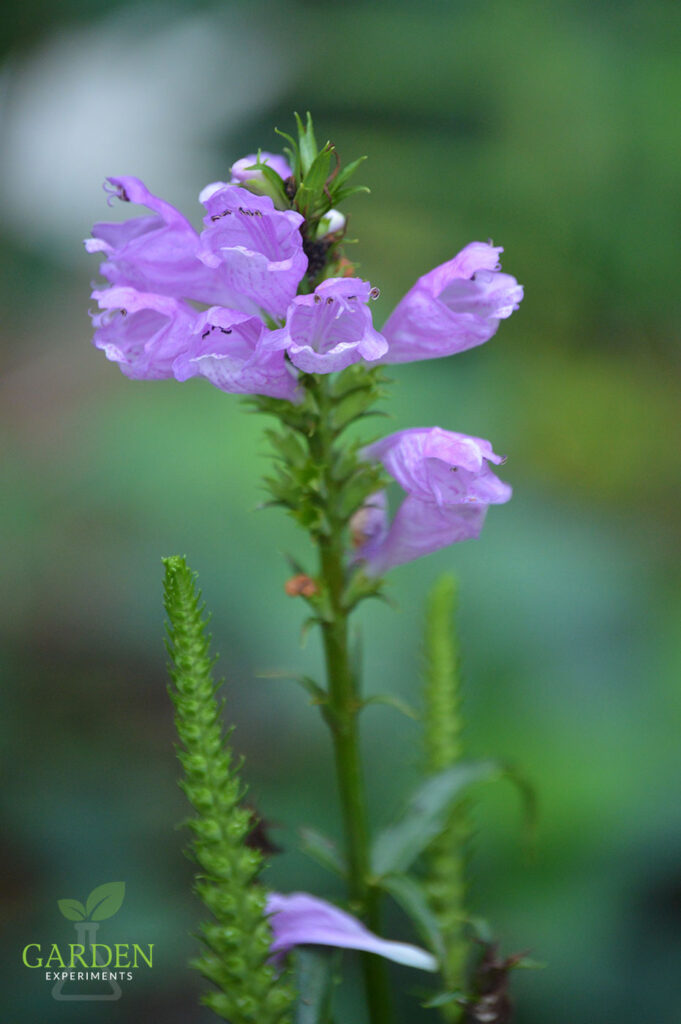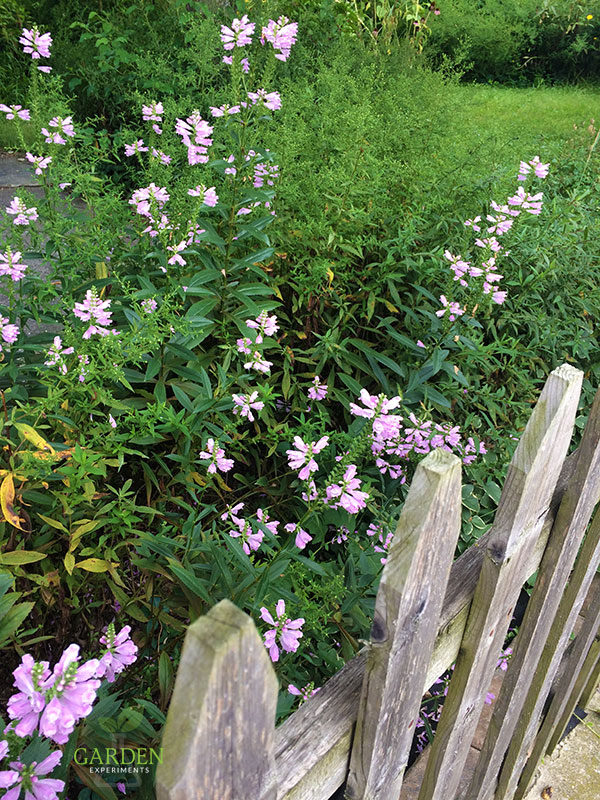Deer-resistant AND it can grow in clay soil – what’s not to love about obedient plants? Native plants are favorites of mine because they are particularly suited for the local conditions (soil, heat, drought or rain, clay soil) of my area. When I find those native plants with particularly pretty flowers, I add them to my hodgepodge of a garden.
This particular plant was a bonus because it is native to Mississippi, it has lots of lovely pale purple blooms in the fall when most things are shutting down, and it was given to me by a friend. I love free plants!
Obedient Plant Flowers
Neatly stacked columns of one-inch-long, small snapdragon-like flowers adorn the tall stems of obedient plants. The tiny light purple to pale lilac-colored, white, or dark purple flowers have dark purple dashed lines like a little landing pad on the interior bottom lip of the flower. These dashed lines serve to direct pollinators to the nectar.
The bloom time for this little plant is fairly long – about 1 to 1.5 months, starting in mid-summer and going until early to mid-fall in many locations. They start to bloom from the bottom of the stem and progress to the buds on top of the spike.
Wildlife Benefits of Obedient Plant
Butterflies, hummingbirds, and bees are attracted to the flowers of the obedient plant, getting nectar from deep in the petals of this flower.
Growing Conditions
This perennial plant tolerates drought, is resistant to deer, and can be grown in clay soil with poor drainage (some say it can even be grown in standing water of a few inches). It grows best in rich, humus soil with adequate drainage in full sun, but it can also be grown in part-shade conditions as well.
When grown in full sun, the plants will grow tall and remain upright – up to 2 to 4 feet in height. In part-shade conditions as well as in very hot summer temperatures, you may need to stake the plants upright. Mine are always falling over, but the blooms are still pretty even when they are closer to the ground.
Is it Aggressive?
I have read comments from people with rich soil and milder climates where their obedient plants have quickly spread and taken over in areas of their gardens. They recommend keeping it in a container or placing it in a spot where you don’t mind if it spreads rapidly.
In my part-shade, clay soil environment, I have not had a problem with the obedient plants spreading rapidly. In fact, I want to move them to a sunnier location so that I will have more blooms in the early fall.
Native Range of Obedient Plant
Obedient plants can be found throughout most of North America, growing in prairies, along the banks of rivers, in swamps, and alongside roads. Their native range includes Montana eastward to the coat and southwards to Texas, including New Mexico and Utah, but excluding Colorado and Wyoming. See the NRCS distribution map for detailed information on native distribution. The eastern provinces in Canada are also in the native range for obedient plants.
Other common names for this plant include false dragonhead and lionheart. It is in the mind family (Lamiaceae).
Why so Obedient?
Where did the obedient plant get its name? When you gently move a flower to face it in another direction, it will stay in place for a while, as if posing for its close-up. Eventually the flower will move back to its original location, but it’s kind of fun to ‘style’ the flowers.




